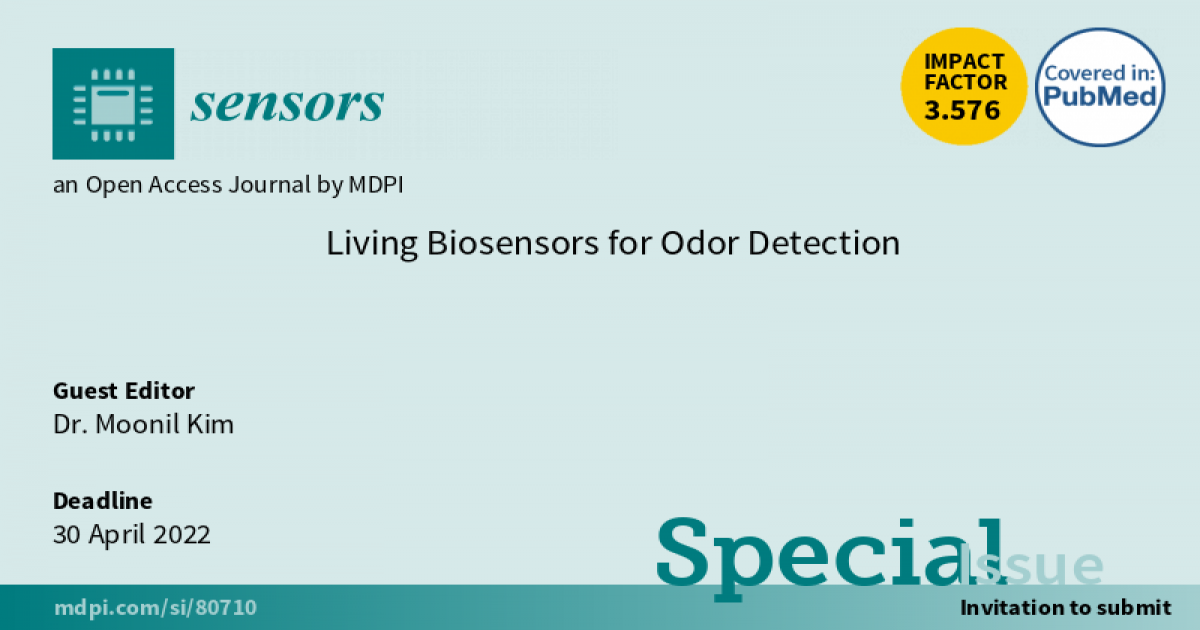- 3.5Impact Factor
- 8.2CiteScore
- 20 daysTime to First Decision
Living Biosensors for Odor Detection
This special issue belongs to the section “Biomedical Sensors“.
Special Issue Information
Dear Colleagues,
Some animals with excellent olfactory discrimination capabilities (i.e., dogs, mice, bees, etc.) can be conditioned to sniff and identify target volatiles. The conditioned animal can quickly recognize the unique odor of volatile organic compounds and exhibit various signal behaviors, acting as an animal nose sensor. Animal nose sensors are mostly applied in the field of drug detection dogs or mine/explosive detection, and recently, some medical applications such as cancer and tuberculosis detection have been attempted. When it comes to medical applications, animal nose sensors, which utilize the animal’s sense of smell to detect disease-specific odors, are a technology that has all of these non-invasive and early detection benefits. There is growing interest in detection animals in the areas of forensic science, land security, and disease diagnosis.
We invite original papers (i.e., research articles and review articles) that address behavioral odor detection by animals. The topics of the Special Issue “Animal Nose Sensors” include narcotics detection, explosive detection, environmental monitoring, food safety detection, and disease diagnostics using animal olfaction.
Dr. Moonil Kim
Guest Editor
Manuscript Submission Information
Manuscripts should be submitted online at www.mdpi.com by registering and logging in to this website. Once you are registered, click here to go to the submission form. Manuscripts can be submitted until the deadline. All submissions that pass pre-check are peer-reviewed. Accepted papers will be published continuously in the journal (as soon as accepted) and will be listed together on the special issue website. Research articles, review articles as well as short communications are invited. For planned papers, a title and short abstract (about 100 words) can be sent to the Editorial Office for announcement on this website.
Submitted manuscripts should not have been published previously, nor be under consideration for publication elsewhere (except conference proceedings papers). All manuscripts are thoroughly refereed through a single-blind peer-review process. A guide for authors and other relevant information for submission of manuscripts is available on the Instructions for Authors page. Sensors is an international peer-reviewed open access semimonthly journal published by MDPI.
Please visit the Instructions for Authors page before submitting a manuscript. The Article Processing Charge (APC) for publication in this open access journal is 2600 CHF (Swiss Francs). Submitted papers should be well formatted and use good English. Authors may use MDPI's English editing service prior to publication or during author revisions.
Keywords
- animal nose sensor
- animal biosensor
- odor detection
- detection animal
- olfactory behavior

Benefits of Publishing in a Special Issue
- Ease of navigation: Grouping papers by topic helps scholars navigate broad scope journals more efficiently.
- Greater discoverability: Special Issues support the reach and impact of scientific research. Articles in Special Issues are more discoverable and cited more frequently.
- Expansion of research network: Special Issues facilitate connections among authors, fostering scientific collaborations.
- External promotion: Articles in Special Issues are often promoted through the journal's social media, increasing their visibility.
- e-Book format: Special Issues with more than 10 articles can be published as dedicated e-books, ensuring wide and rapid dissemination.

